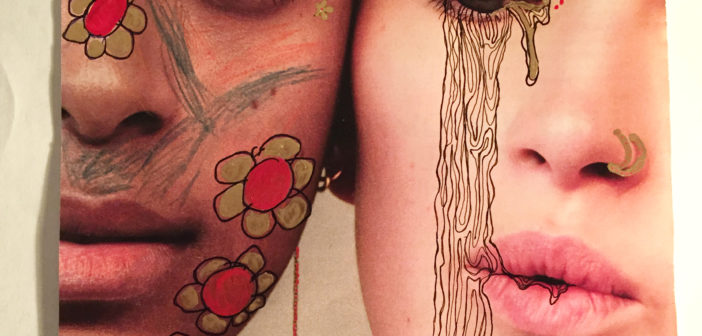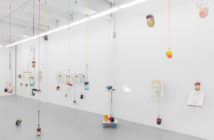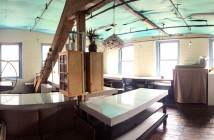In this installment of Here to Create, Courtney Moy talks with local curator and artist Silvi Naci. Naci is an active member of the creative community with an avid spirit for supporting the arts, having worked in a variety of creative fields from printmaking, graphic design, illustration, letterpress, curation, and public art. She talks with BR&S about her love for helping small local businesses, like Render Coffee, building the community up through socially engaged work, as well and her current position as the Assistant Director at Samsøñ Projects.
Tell me a bit about yourself, your education and career path. How did you end up in the art & curatorial world?
I moved to the States when I was fourteen, two months before 9/11. It was socially and politically unstable in Albania and my mother worked very hard to help us move to the States for a better life and education. We won the lottery to come here, a hellish two-year process which not many people pass. It’s funny when I tell my friends the process of coming to the States; a lottery is a game, we won a game for a better life.
I have attended art schools since I was six years old; first a music and art school in my hometown of Fier, then Boston Arts Academy for high school and later NESAD at Suffolk University.
Organizing art events was not something I was familiar with growing up. In Albania after the collapse and fraud of banks in 1995, everyone lost their money and many committed suicide. My family lost their entire life savings, but thankfully we had a roof over our heads. The only ‘art’ I was acquainted with was political and revolutionary graffiti. Although difficult to see and be part of, it was always fascinating to me.
Moving to the states, I started seeing the different context in the graffiti world. Graffiti was also a socio-political statement. I started organizing art shows when I was twenty, collaborating with an all-female street art group Paint Pens in Purses and guest curating in my friend's gallery, Fourth Wall Project in Fenway. It was thrilling for me to promote these gatherings, especially as a female and a foreigner where this would be impossible to organize in my birth town. I continued guest curating in several spaces, later on working at Liquid Art House as Art Director, and currently at Samsøñ as Assistant Director which has been my favorite gallery for many years.
You use many creative forms in your own work, including printmaking, letterpress, design, and illustration, in addition to your curatorial practices. How does each of these media or processes contribute to your creative process, and the person that you are today?
I’m becoming and molding into my most authentic self. It helps me look at the whole picture. Design is meant to convey a similar idea to a larger mass, and fine art is completely different, it’s subjective and the idea is often elusive. So it’s helpful to practice both, especially when curating exhibitions or thinking about a presentation as a whole, the audience in both areas is very critical.
I still carry my printmaking background with me when I make work. The process is very important to me. I often listen to where the work leads me. Sometimes I come up with ideas beforehand, but as I start to make the work I play close attention to the process and what the work needs. It’s a very Marxist process and each element is just as important as the next, each step is just as important as the finished product.
I try to be mindful and aware of what I am doing and how can it affect the people around me and myself in the best way. I know my talents and I like to work with people who I know I can help, whose mission I support and believe in. I love working with artists from different disciplines, learning about their work, helping them present their work, thinking about the audience, and what is the best way to see and experience the work.
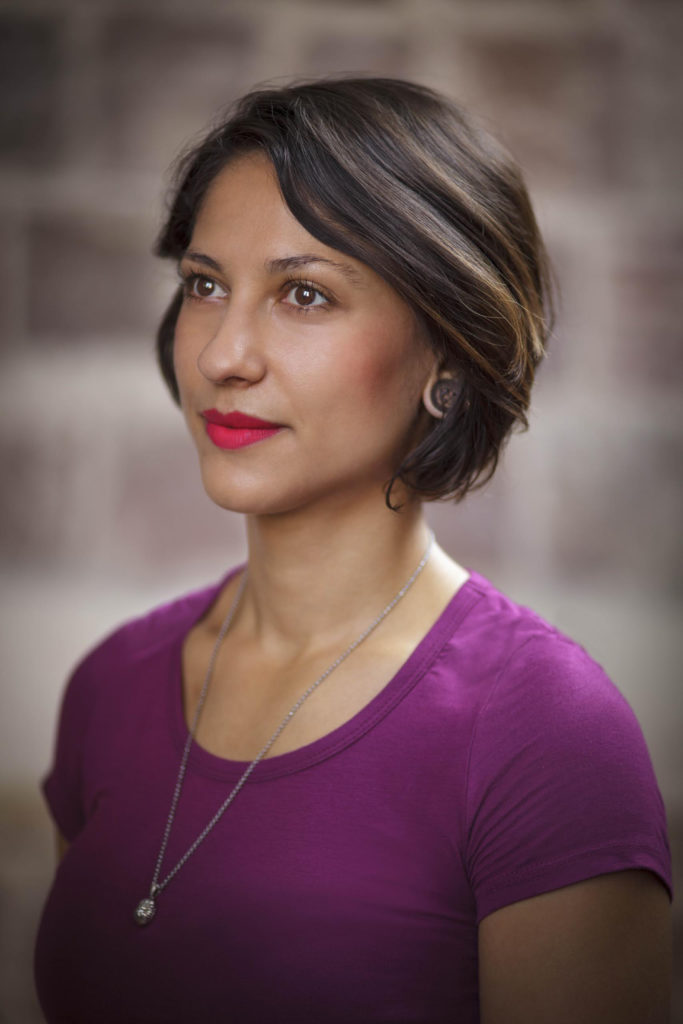
Silvi Naci. Photo: Heather McGrath
How important is working with artists in different fields to your own practice?
It’s extremely important. For years I trained as a printmaker, we’re a strange kind and very controlling. Working with artists who use an array of mediums and techniques helps me expand my own practice and thinking of making work. The material is very important to the message and its history can transcend the work.
it is my impression that from all your self-initiated projects and creative outlets, you get great joy from being a part of a community and curating that environment. Was this something instilled in you at a young age? Did you have a mentor?
In Albania, organizing public art events is not a common activity. Art is mainly used as a form of political action. One project, Take back your city with paint, initiated by the prime minister Edi Rama and happening over the last few years in Tirana, the capital city, is to paint all the houses using different patterns and colors as a positive movement for people to take back control of their city.
My friends and family are my biggest fans and very supportive of my projects. I am always grateful for them. My biggest mentor and one of my closest friends, a former professor, artist and Chair of NESAD at Suffolk University, is Audrey Goldstein. We have been very close for over a decade now, and I can truly say I am honored to be in her life. She’s a beautiful energy!
Samsøñ Projects is known for breaking a lot of barriers in contemporary art in Boston as well as showcasing a lot of artists of color. What attracted you to their program?
It has been an incredible journey to work with such incredible, intelligent, creative, and kind group of people at Samsøñ It has been very gratifying, moving and educational. I feel so lucky and happy every time I enter the door here. We are currently preparing for NADA NY May 5-8th with a great group of artists of color. We are presenting a group exhibition that confronts the subjectivity and objectivity in being ‘of color’ with over forty artists such as Lorna Simpson, Carrie Mae Weems, Kerry James Marshall, Steve Locke, Radcliffe Bailey, Tameka Norris, Rico Gatson, Todd Gray and many more.
The program at Samsøñ is truly powerful and diverse. I am always blown away by Camilo’s ideas and his presentation of the works. The importance of the work to be placed in the exhibitions and the audience which it will impact – that is art in itself.
Can you talk about some of your gallery management experiences prior to Samsøñ? Of all your experiences, what have you enjoyed the most and the least?
At Liquid Art House, it was fascinating to work with Chef Rachel Klein to create dishes and drinks that were inspired by some of the works we exhibited. It can be a lot of fun when combining and fusing the different artistic elements from art, music, and food. Aaron Stephan is an artist we’ve been working with at Samsøñ, he curates staged dinners that combine elements of performance art, architecture, and culinary arts. It’s a really fascinating presentation.
Another favorite experience was last year at Samsøñ we presented a solo exhibition with Todd Gray, personal photographer of Michael Jackson between ‘83-’85. Gray’s work is also autobiographical and informed by his position in the African Diaspora. It was truly incredible to work with him and hear his stories while installing the work about MJ. Growing up in Albania we loved watching Michael’s performances on TV.
One of my least favorite experiences in gallery life was working with people who had no respect for the craft, the artwork, and its preservation. Being a female in a gallery management level position I often have to repeat myself to people who are mostly reluctant to ask for help from a woman. Sometimes they just want to speak to the men in charge.
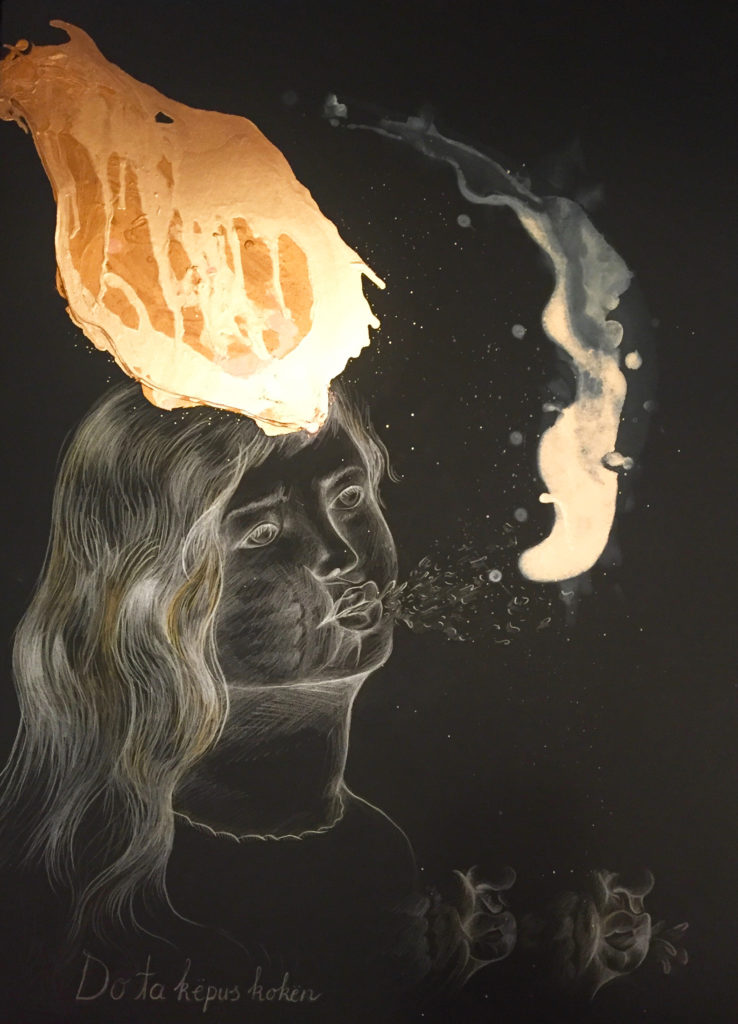
Silvi Naci. Do Ta Kpus Kokën (I will cut your head off), 2016
graphite, ink, watercolor, enamel and crayon on black BFK printmaking paper
26 1/2 x 20 1/8 inches. Photo: Silvi Naci.
What are you currently working on and most excited about?
I love making my own work as well as curating exhibitions, they both satisfy and strengthen different parts of my practice. I have gone back to making some works on paper. This new body of work deals with family relationships, ideas of feminism, class, and identity. It’s also been greatly inspiring to collaborate with my niece, Sofia, whom I have had a close relationship with since she was born. She’s a wonderful and powerful little lady I’m excited to see grow up. As for the future, I hope to attend grad school.
Lastly, what is the best piece of advice you received in the last year?
“Don’t let fear fuel your heart” from my mother, the strongest and most loving woman I know. She’s a boss and won’t let anyone break her down.
Based on an interview with Silvi Naci on April 21, 2016.

